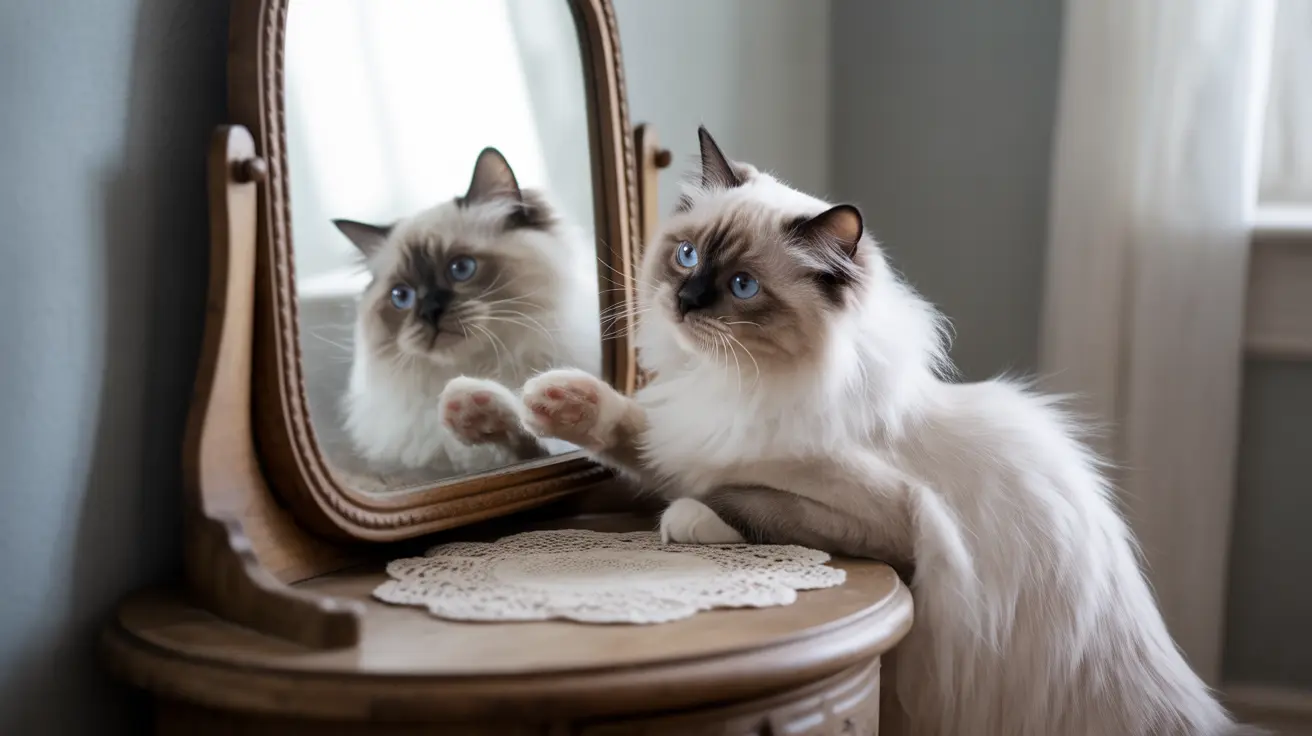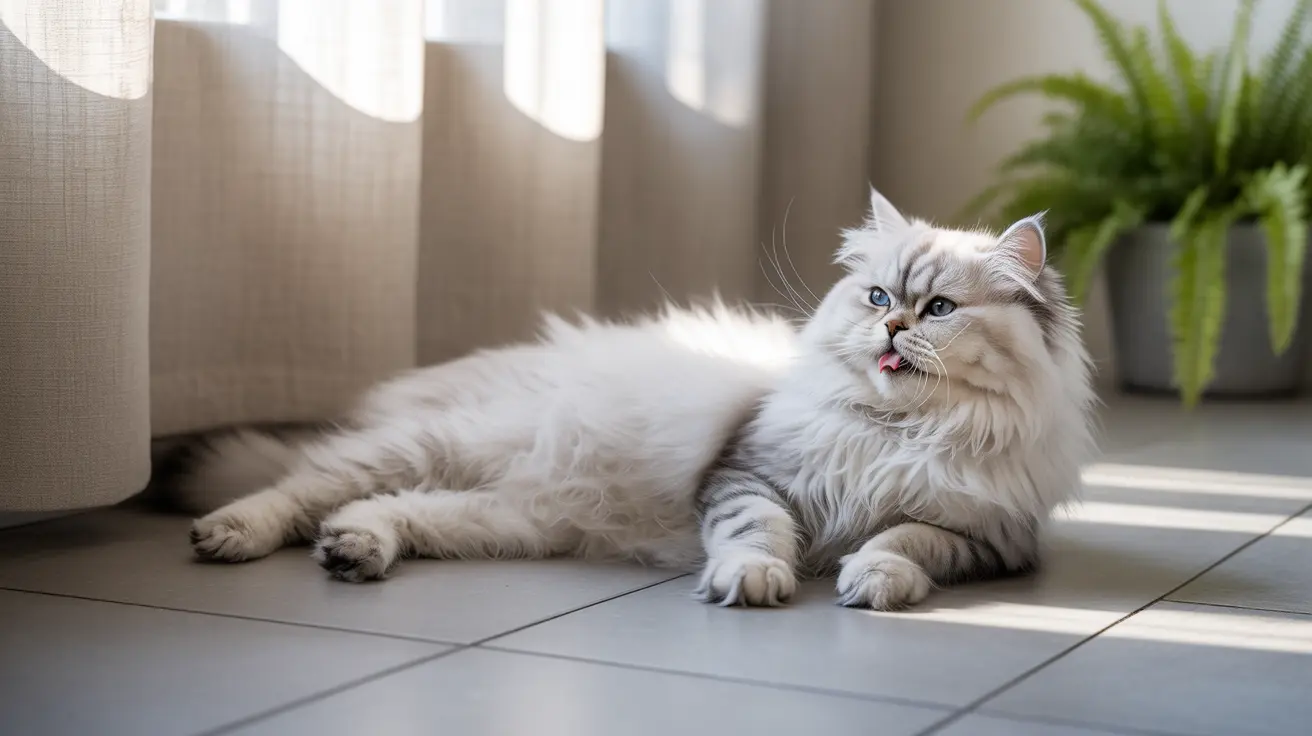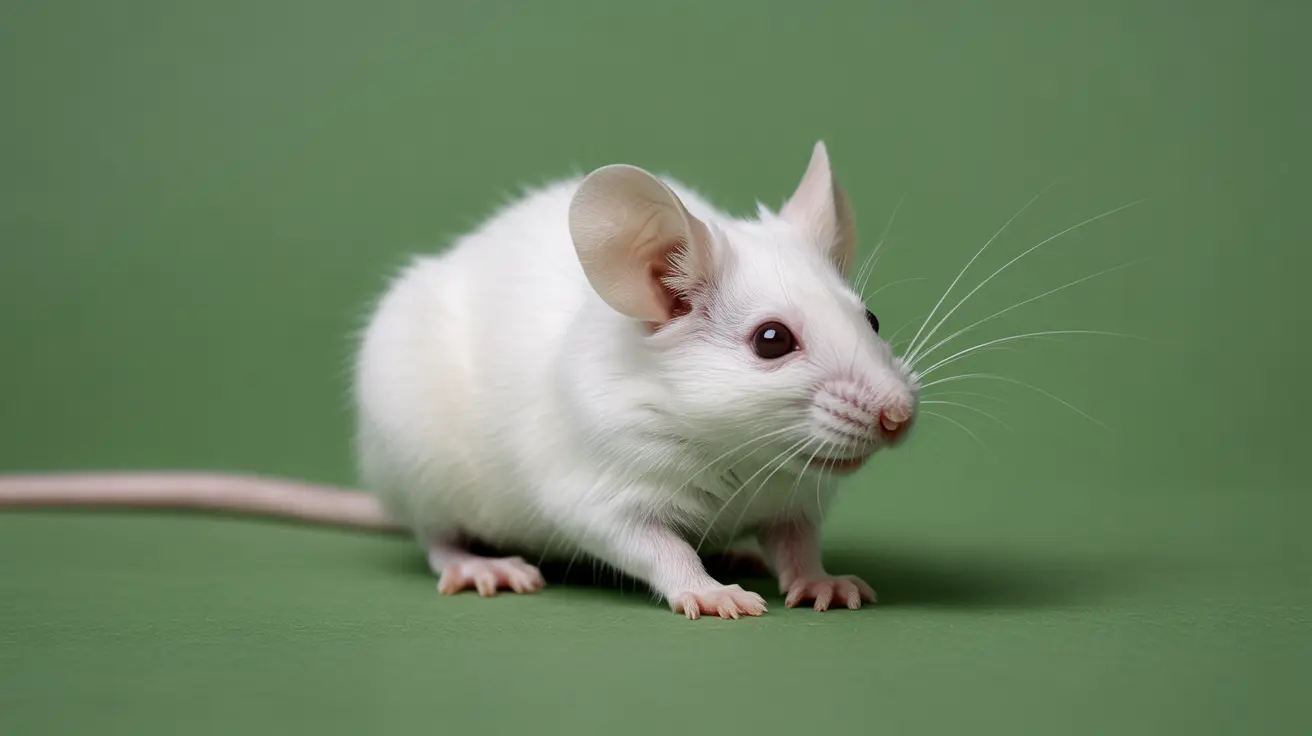Understanding Abnormal Coat Changes in Cats: When to Worry and Seek Veterinary Care
A cat's coat serves as both a window into their overall health and one of their most distinctive features. While some coat variations are perfectly normal throughout a cat's life, abnormal coat changes in cats can signal underlying health issues that require prompt attention. As a responsible cat owner, learning to distinguish between normal coat evolution and concerning changes can make the difference between early intervention and more serious health complications.
Understanding what constitutes abnormal coat changes in cats empowers you to provide better care for your feline companion. From parasitic infections to hormonal imbalances, various conditions can manifest through your cat's skin and fur. This comprehensive guide will help you identify warning signs, understand potential causes, and know when it's time to consult your veterinarian for proper diagnosis and treatment.
Normal Coat Changes vs. Abnormal Signs
Before identifying problematic changes, it's essential to understand what constitutes normal coat evolution in cats. Normal coat changes include the natural loss of puppy fur as kittens mature, seasonal coat shifts where cats develop thicker winter coats and shed for summer, and hairless patches that may develop on pressure points like elbows from regular contact with surfaces. Additionally, aging cats naturally develop gray hairs, particularly around the face and ears, and previously injured areas may remain permanently hairless due to scar tissue formation.
In contrast, abnormal coat changes in cats present distinctly different characteristics that should raise immediate concern. Hairless spots accompanied by red, inflamed, or otherwise altered skin indicate potential infection or disease. Scaly, crusty, or consistently unkempt fur that resists normal grooming efforts often signals underlying health problems. Perhaps most concerning are lesions that appear crusty, contain pus, or show signs of active infection, as these require immediate veterinary attention to prevent complications.
Common Causes of Abnormal Coat Changes
Parasitic Infestations
External parasites represent one of the most frequent causes of abnormal coat changes in cats. Fleas, mites, and lice can cause intense itching, leading to excessive scratching and subsequent hair loss. Flea infestations often result in patchy hair loss, particularly around the base of the tail and inner thighs, accompanied by small, dark specks of flea dirt in the fur. Ear mites specifically target the ear canals but can spread to surrounding areas, causing intense scratching that damages the coat around the ears and neck.
Demodectic mange, caused by Demodex mites, typically affects immunocompromised cats and creates distinctive hairless patches with scaling or crusting. Sarcoptic mange, though less common in cats, causes intense itching and rapid hair loss, often starting around the ears and spreading to other body areas. These parasitic conditions not only affect the coat but can lead to secondary bacterial infections if left untreated.
Fungal Infections and Zoonotic Concerns
Fungal infections, particularly dermatophytes like those causing ringworm, create characteristic circular patches of hair loss with scaly, crusty edges. Despite its name, ringworm is not caused by worms but by fungi that consume keratin in hair, skin, and nails. These infections are particularly concerning because they are zoonotic, meaning they can transmit from cats to humans and other pets in the household.
Fungal infections require strict treatment protocols and environmental decontamination to prevent spread. The affected areas may appear red and inflamed, and some fungal species fluoresce under ultraviolet light during Wood's lamp examination, though not all species exhibit this property. Prompt veterinary diagnosis through fungal culture remains the gold standard for identifying specific fungal organisms and determining appropriate treatment protocols.
Hormonal Imbalances and Their Effects
Hormonal disturbances can significantly impact hair growth cycles and coat quality in cats. Thyroid disorders, particularly hyperthyroidism common in older cats, can cause coat thinning, excessive shedding, or poor coat quality. Affected cats may develop a dull, brittle coat that lacks the natural shine and softness of healthy fur. Conversely, hypothyroidism, though rare in cats, can cause coat thickening and changes in hair texture.
Adrenal disorders, including Cushing's disease and Addison's disease, also manifest through coat changes. Cushing's disease may cause hair thinning, while Addison's disease can result in poor coat quality and delayed hair regrowth after shaving or injury. Sex hormone imbalances in intact cats can lead to seasonal coat changes that extend beyond normal patterns, creating patchy or uneven hair growth.
Bacterial Infections and Secondary Complications
Bacterial skin infections typically develop as secondary complications when the skin barrier becomes compromised through scratching, wounds, or underlying conditions. These infections can cause pustules, crusting, and localized hair loss around affected areas. Staphylococcal infections are most common and may create small, pus-filled bumps that eventually rupture and crust over.
More severe bacterial infections can lead to deep skin involvement, creating abscesses that require surgical drainage and intensive antibiotic therapy. If left untreated, bacterial infections can spread extensively, causing painful lesions and permanent scarring that affects future hair growth in those areas.
Diagnostic Approaches for Coat Abnormalities
Veterinary diagnosis of abnormal coat changes in cats typically requires multiple testing methods because different conditions often produce similar symptoms. Skin scrapings help identify mites and other external parasites by collecting samples from affected areas for microscopic examination. Wood's lamp examination uses ultraviolet light to detect certain fungal infections, though only some dermatophyte species fluoresce under this light.
Fungal and bacterial cultures provide definitive identification of infectious organisms and determine appropriate treatment options. Skin impression smears collect surface cells and bacteria for immediate microscopic evaluation, while skin biopsies may be necessary for complex cases involving immune-mediated diseases or suspected tumors. Blood work often accompanies these tests to evaluate for systemic conditions like hormonal imbalances or nutritional deficiencies that might contribute to coat problems.
Home Inspection Techniques for Early Detection
Regular home examinations can help detect abnormal coat changes in cats before they become severe. Begin by running your hands through your cat's fur, feeling for unusual lumps, bumps, or areas of hair loss. Pay special attention to areas your cat frequently scratches or grooms excessively, as these may indicate developing problems.
Examine the skin beneath the fur for redness, scaling, or unusual odors that might indicate infection. Check for external parasites by looking for small, dark specks (flea dirt) or actual insects moving through the fur. Notice any changes in your cat's grooming behavior, as cats that stop grooming or groom excessively may be experiencing discomfort or illness. Document any changes with photographs and notes about when they first appeared, as this information helps veterinarians make accurate diagnoses.
Prevention Strategies and Nutritional Support
Preventing abnormal coat changes in cats begins with proper nutrition using high-quality commercial cat food that meets all nutritional requirements. Look for foods with appropriate protein levels, essential fatty acids, and vitamins that support healthy skin and coat development. Omega-3 and omega-6 fatty acids are particularly important for maintaining skin barrier function and coat shine.
Regular parasite control through veterinarian-recommended products helps prevent flea, tick, and mite infestations that can damage the coat. Maintain a consistent grooming schedule, especially for long-haired breeds, to prevent matting and identify problems early. Environmental factors like proper humidity levels and clean bedding also contribute to healthy skin and coat condition.
Environmental Factors Affecting Coat Health
Indoor environmental conditions significantly impact feline coat health. Low humidity can cause dry, brittle fur and flaky skin, while excessive humidity may promote bacterial and fungal growth. Maintain indoor humidity levels between 40-60% for optimal skin health. Temperature extremes can also affect coat condition, with overheated environments potentially causing excessive shedding and underheated spaces leading to poor circulation that affects hair growth.
Grooming tools should be clean and appropriate for your cat's coat type. Dirty brushes can harbor bacteria and fungi, potentially introducing infections to healthy skin. Choose tools that effectively remove loose hair without damaging the skin, and replace them regularly to maintain hygiene standards.
When to Seek Veterinary Care
Immediate veterinary attention is necessary when abnormal coat changes in cats are accompanied by other symptoms like lethargy, loss of appetite, or behavioral changes. Seek prompt care for any lesions that appear infected, show pus formation, or emit unusual odors. Rapidly spreading hair loss, especially when accompanied by intense itching or skin inflammation, requires professional evaluation to prevent complications.
Don't delay veterinary consultation for coat changes that worsen despite home care efforts or when multiple cats in the household develop similar symptoms simultaneously, as this may indicate contagious conditions. Early intervention typically results in better treatment outcomes and prevents more serious complications from developing.
Frequently Asked Questions
- What are the most common causes of sudden hair loss in cats?
Sudden hair loss in cats is most commonly caused by external parasites like fleas or mites, fungal infections such as ringworm, or excessive scratching due to allergies. Stress-related over-grooming and bacterial infections can also cause rapid hair loss. Veterinary examination is essential to identify the specific cause and appropriate treatment.
- Can poor nutrition cause coat changes in cats?
Yes, nutritional deficiencies can significantly affect coat quality in cats. Insufficient protein, essential fatty acids, or vitamins can lead to dull, brittle fur, excessive shedding, or poor hair regrowth. High-quality commercial cat foods typically provide adequate nutrition, but homemade diets may lack essential nutrients if not properly balanced.
- How can I tell if my cat's coat changes are normal aging or a health problem?
Normal aging typically causes gradual graying around the face and possibly slight coat thinning, but the skin should remain healthy-looking. Abnormal changes include patches of hair loss, red or inflamed skin, scaling, crusting, or areas that feel different to the touch. When in doubt, consult your veterinarian for proper evaluation.
- Are fungal skin infections in cats contagious to humans?
Yes, many fungal infections in cats, particularly ringworm, are zoonotic and can transmit to humans and other pets. These infections require strict hygiene measures, environmental decontamination, and proper treatment to prevent spread. Anyone handling an infected cat should wash hands thoroughly and avoid direct contact with affected areas.
- How long do coat changes take to resolve with treatment?
Treatment timelines vary depending on the underlying cause. Parasitic infections may show improvement within days to weeks, while fungal infections often require 6-12 weeks of treatment. Hormonal conditions may take several months to resolve, and some immune-mediated diseases require long-term management. Your veterinarian can provide specific timelines based on your cat's diagnosis.
- Should I isolate my cat if they have coat abnormalities?
Isolation depends on the underlying cause. Cats with suspected fungal infections or highly contagious parasites should be separated from other pets until veterinary diagnosis and treatment begin. However, isolation isn't necessary for hormonal or nutritional causes of coat changes. Your veterinarian will advise on appropriate precautions based on the specific condition.
- Can stress cause abnormal coat changes in cats?
Yes, stress can cause cats to over-groom, leading to hair loss and skin irritation, particularly on the belly, inner thighs, and legs. Stress-related grooming creates symmetrical patterns of hair loss without underlying skin disease. Addressing stressors and providing environmental enrichment often helps resolve these issues, though severe cases may require anti-anxiety medication.
Conclusion
Recognizing abnormal coat changes in cats is a crucial skill for any cat owner committed to their pet's health and wellbeing. While some coat variations are normal parts of feline life cycles, distinguishing these from problematic changes can prevent minor issues from becoming serious health complications. The key lies in understanding what constitutes normal coat evolution versus signs that warrant veterinary attention.
Remember that early detection and intervention typically yield the best outcomes for cats experiencing coat abnormalities. Regular home inspections, proper nutrition, consistent parasite control, and maintaining good environmental conditions all contribute to healthy skin and coat maintenance. When abnormal changes occur, prompt veterinary consultation ensures accurate diagnosis and appropriate treatment, protecting both your cat's health and preventing potential transmission of zoonotic conditions to family members.






